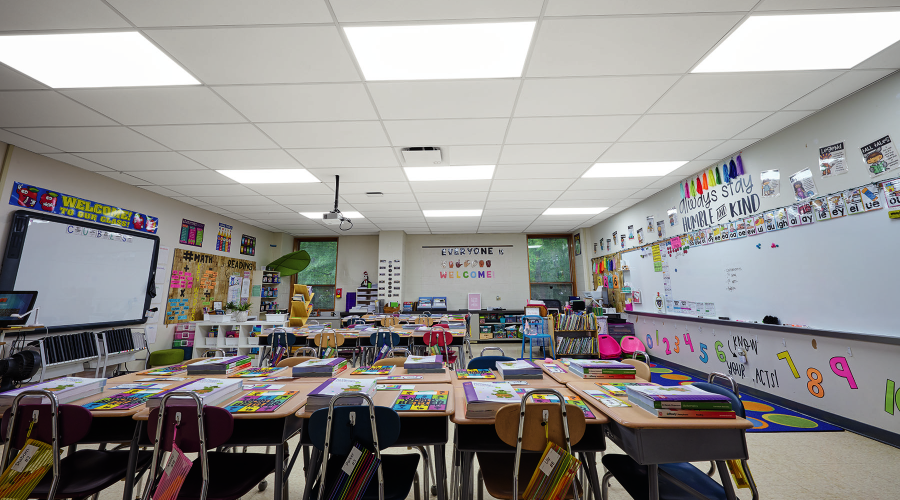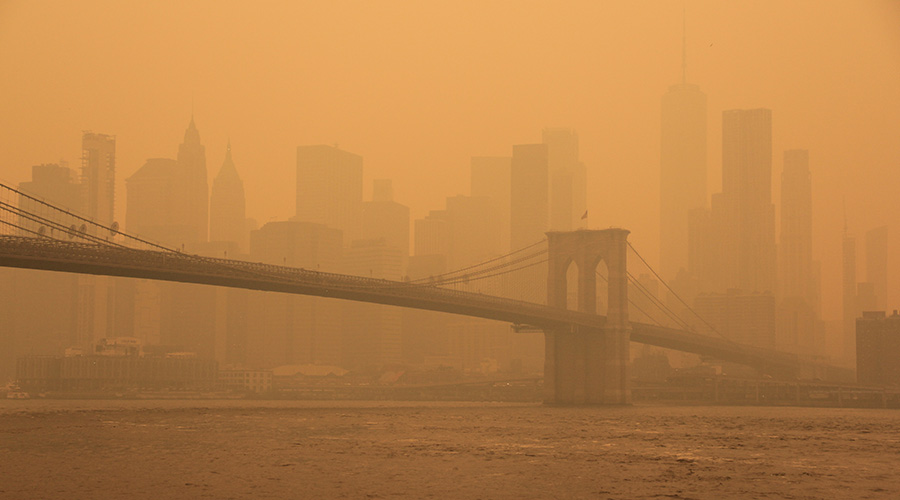 Poor indoor air quality in facilities such as schools can lead to immediate and long-term effects that include headaches, dizziness,respiratory diseases and cancer.
Poor indoor air quality in facilities such as schools can lead to immediate and long-term effects that include headaches, dizziness,respiratory diseases and cancer. IAQ Strategies and Solutions
Understanding facilities’ IAQ needs can help managers identify opportunities to improve indoor environments
The average American spends 87 percent of the day indoors, making the built environment the overwhelming majority of air people breathe. While this situation has affected construction of newer buildings and led to changes in ASHRAE standards and the LEED certification system, the stock of existing buildings has not received the same attention.
Poor indoor air quality can lead to immediate effects — eye and throat irritation, headaches, dizziness, etc. — and long-term effects that include respiratory diseases, heart disease, and cancer.
Understanding a building’s requirements is the first step for maintenance and engineering managers seeking to maximize indoor air quality (IAQ). Over time, as building occupants repurpose and reorganize space within a building, managers sometimes ignore the systems that serve them. Managers who ask whether the building program has changed since its design might be able to access low-hanging fruit in terms of improving IAQ.
Sources and strategies
Sources of new contaminants typically come from materials occupants bring into the built environment. These items include but are not limited to new furniture, carpeting, paints, and cleaning products. Each of these products brings the potential to impact IAQ, with the common return air from these affected spaces mixing at the air handling unit.
Managers can use a number of measures to minimize the detrimental effects on IAQ. The first step in improving IAQ is setting building standards in design and construction guidelines to minimize these contaminants. If materials cannot get in the building, they will not be in the airstream.
Specifying low-emitting materials also is an important step. Such products include paints, sealants and primers with few or no volatile organic compounds (VOC). Managers should review material safety data sheets (MSDS) for all products before allowing them into a building. The South Coast Air Quality Management District (SCAQMD) and Green Seal also have set allowable limits for a range of facility products as a reference.
Similarly, managers can consult rating systems that set minimum requirements for products. For example, FloorScore, Greenguard Gold, and CRI Green Label offer information on various flooring systems, and Greenseal 42 certifies environmentally friendly cleaning products.
In all cases, managers should be conscious of greenwashing, which describes the practice of touting products as green without offering recognized certifications to supporting the claim. Another no- or low-cost strategy to improve IAQ involves negating potential tobacco smoke and emissions exhaust from building intakes and openings as required per ANSI/ASHRAE/IES/USGBC Standard 189.1-2014, Standard for the Design of High-Performance Green Buildings. Instituting a non-smoking policy in and within 25 feet of all building entrances and intakes will help to reduce the potential negative effects of tobacco smoke.
Related Topics:














